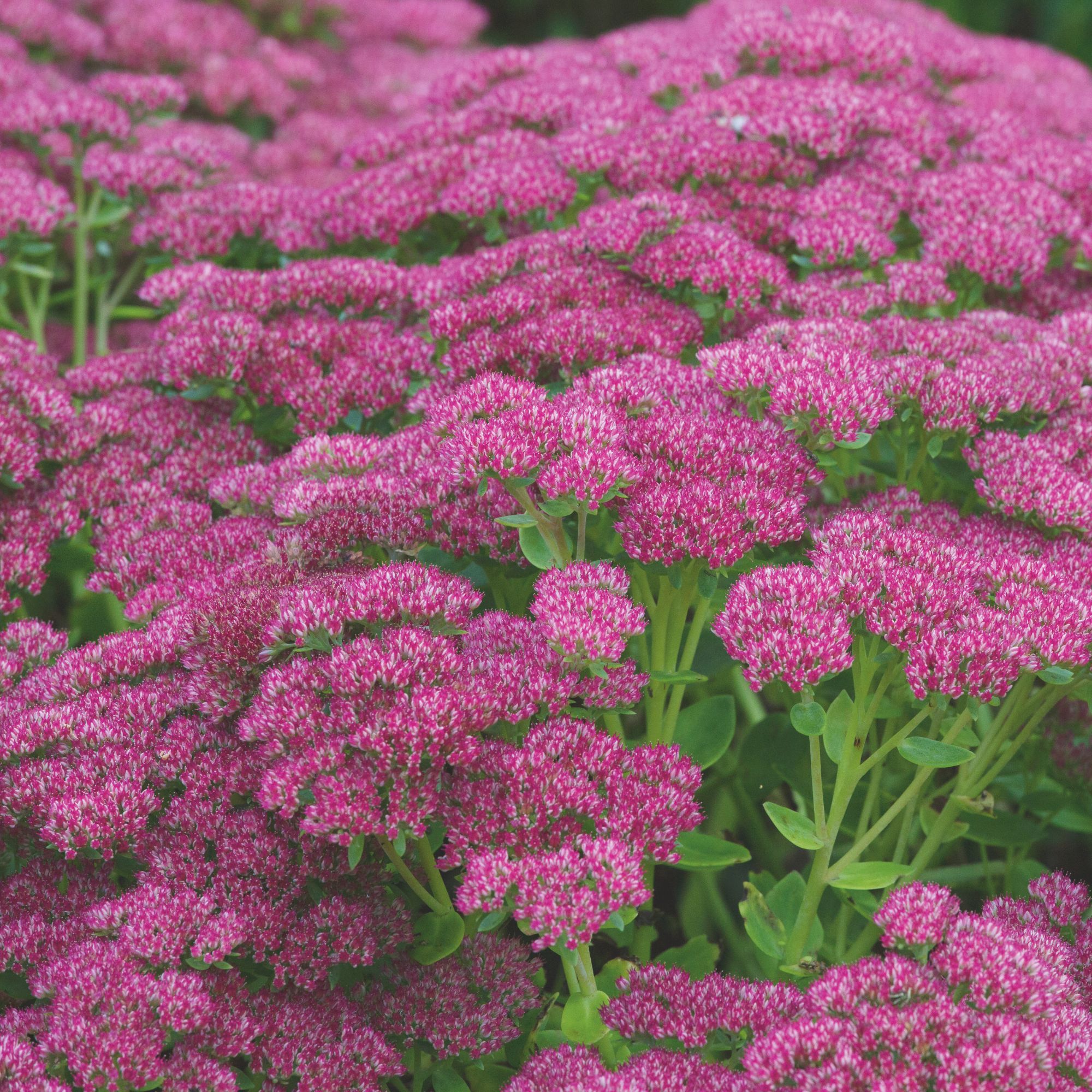
Also known as stonecrops, sedums are perennial succulent plants which produce large, nectar-rich flowerheads. Learning how to grow sedums will encourage bees and other pollinators to visit your garden, and they're a great way to brighten up borders and containers, too.
Sedums are among the best autumn-flowering perennials you can add to your garden, providing a pop of colour while other plants are dying back for the winter. As succulents, the plants are also drought-tolerant, making them a great option if you're looking for low-maintenance border plants.
So, we've rounded up some tips for how to grow sedums successfully and get the most out of the plants all year round.
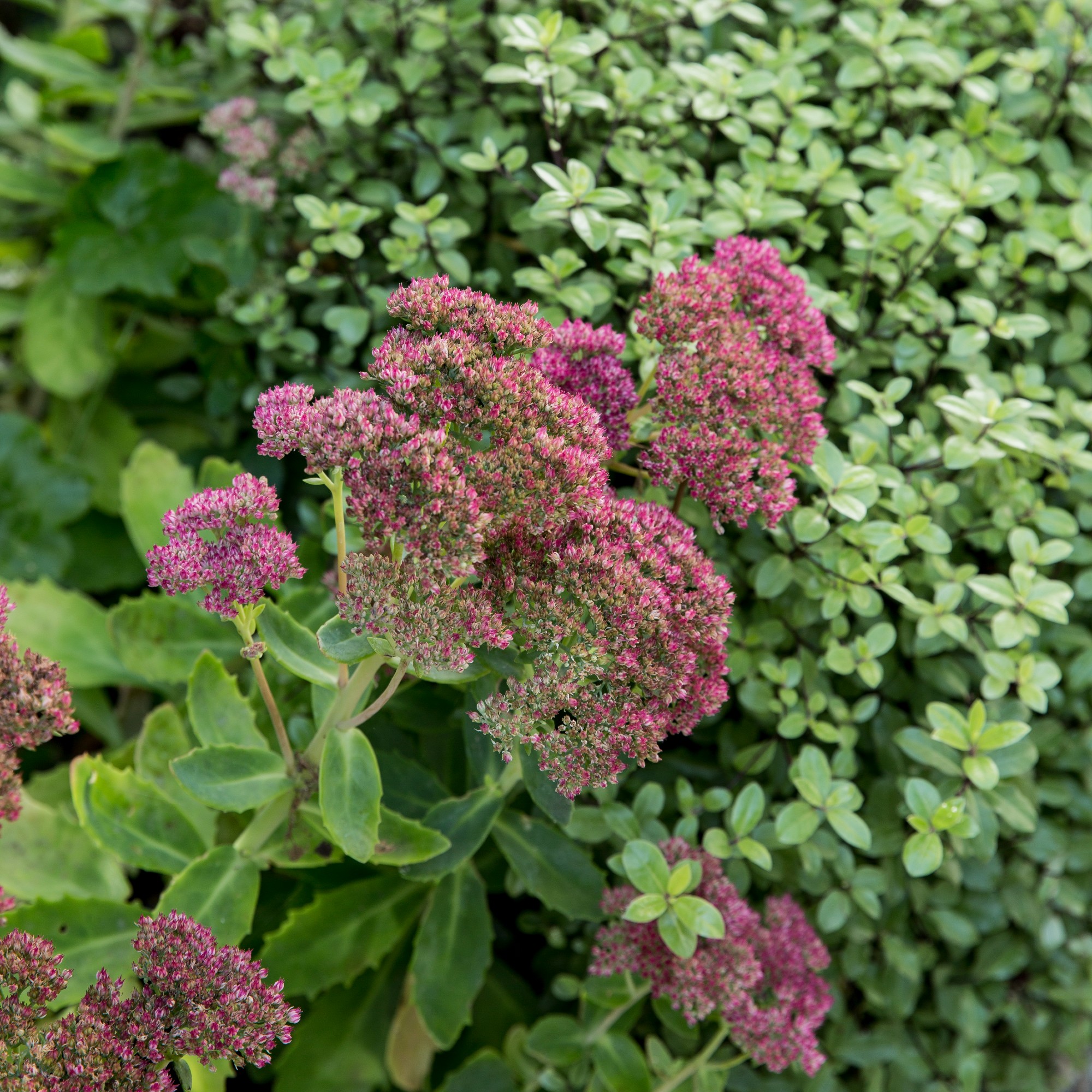
What you'll need
- A sedum plant
- A spade like the Spear & Jackson Neverbend Digging Spade from Amazon
- Potting mix like Westland John Innes No.1 Compost from Amazon for container plants
- Horticultural grit like Horticultural Potting Grit from Sarah Raven
Where to buy sedums
One of the most popular stonecrop varieties, 'Herbstfreude''s flowerheads can reach a width of 20cm
This variety produces flurries of romantic pink blooms, perfect for borders or rock gardens
We love the unique golden flowers of this variety, which produces orange seed capsules during the autumn
1. Choose the right spot
Sedums are incredibly versatile plants, so you'll have plenty of scope when choosing a location for them. Whether you learn how to grow sedums in containers or borders, they'll thrive with little to no maintenance.
But because sedums are succulents, it's best to plant them in well-draining soil. 'If your soil is good, moisture-retentive loam, then add a large amount of horticultural sharp grit,' advises Angela Slater, gardening expert at Hayes Garden World.
Sedums also appreciate full sun, so plant them somewhere they'll receive plenty of sunshine. For this reason, sedums are great for south-facing garden ideas.
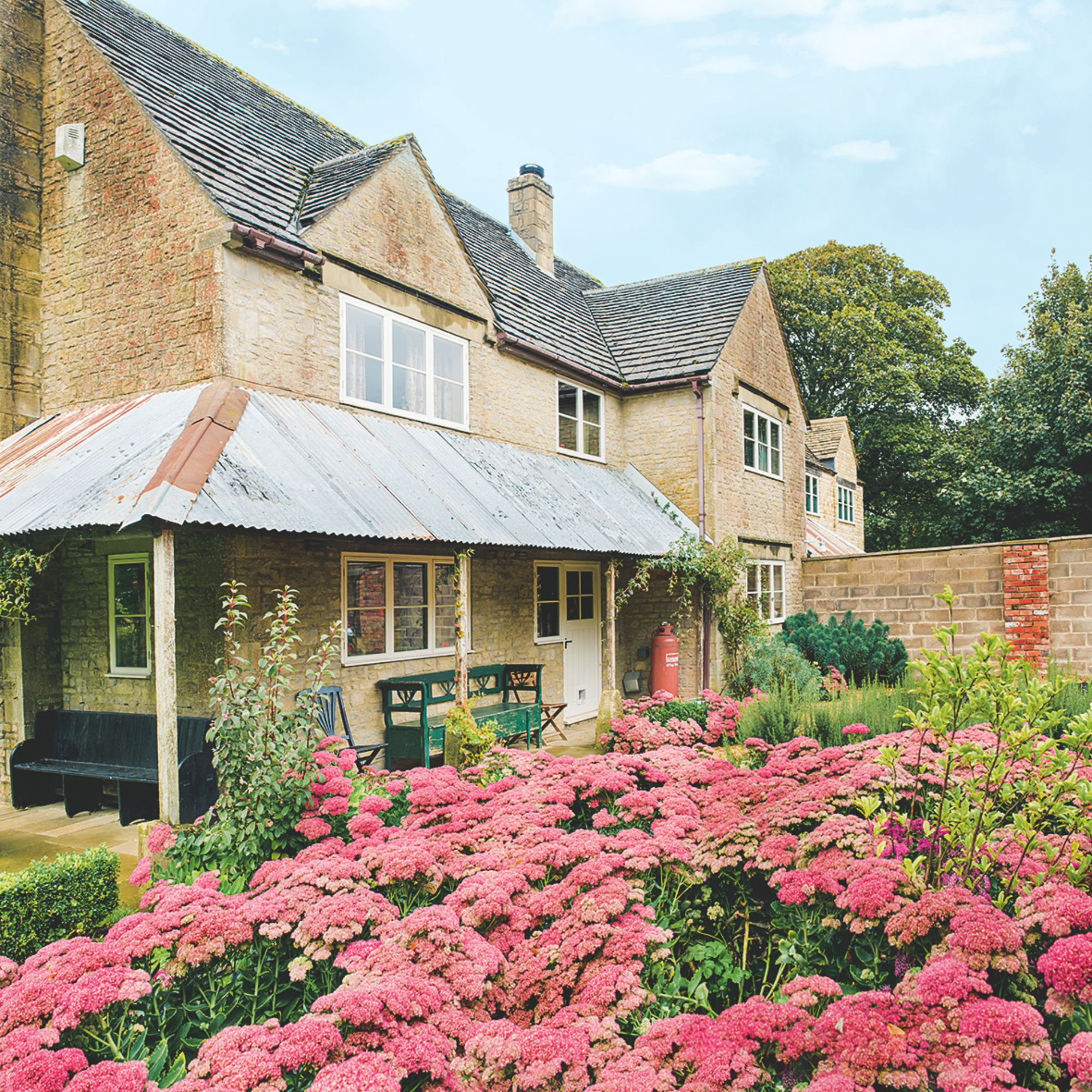
Or, for something a little unique, you could try growing them in between the cracks in walls. This is actually where the name 'stonecrop' comes from.
'Just push a little John Innes No 1 mixed with horticultural grit into the space first,' says Angela. 'Growing them in cracks in a wall on their side also ensures that rainwater doesn’t sit in the flowers, which can lead to the plant going rotten in winter.'
2. Plant them at the right level
Once you have the perfect spot in mind, you can get to work planting your sedum. We spoke to David Swanton, head gardener at the National Trust's Powis Castle and Garden in Welshpool, where a number of sedums grow in the Castle's iconic garden.
'When planting sedums, do not plant them too deep – leave the shoots above the ground,' David advises. 'We use hazel plant supports on the taller varieties to keep them upright.'
Make sure you dig a hole that's as deep and wide as the pot the plant came in.

3. Don't overwater
While sedums are easy to care for, it's vital that you don't give them too much water. Sedums are one of the best drought-tolerant plants you can grow in the garden, and because they're a type of succulent plant, water is stored in the leaves – so you can strip their watering schedule right back.
'Only in exceptionally dry conditions do they need any water, and in that case, just give them a little water at the base, not over the entire plant,' advises Angela from Hayes Garden World.
You can water the plants a little more regularly after planting, until they're established, but avoid watering during the winter.
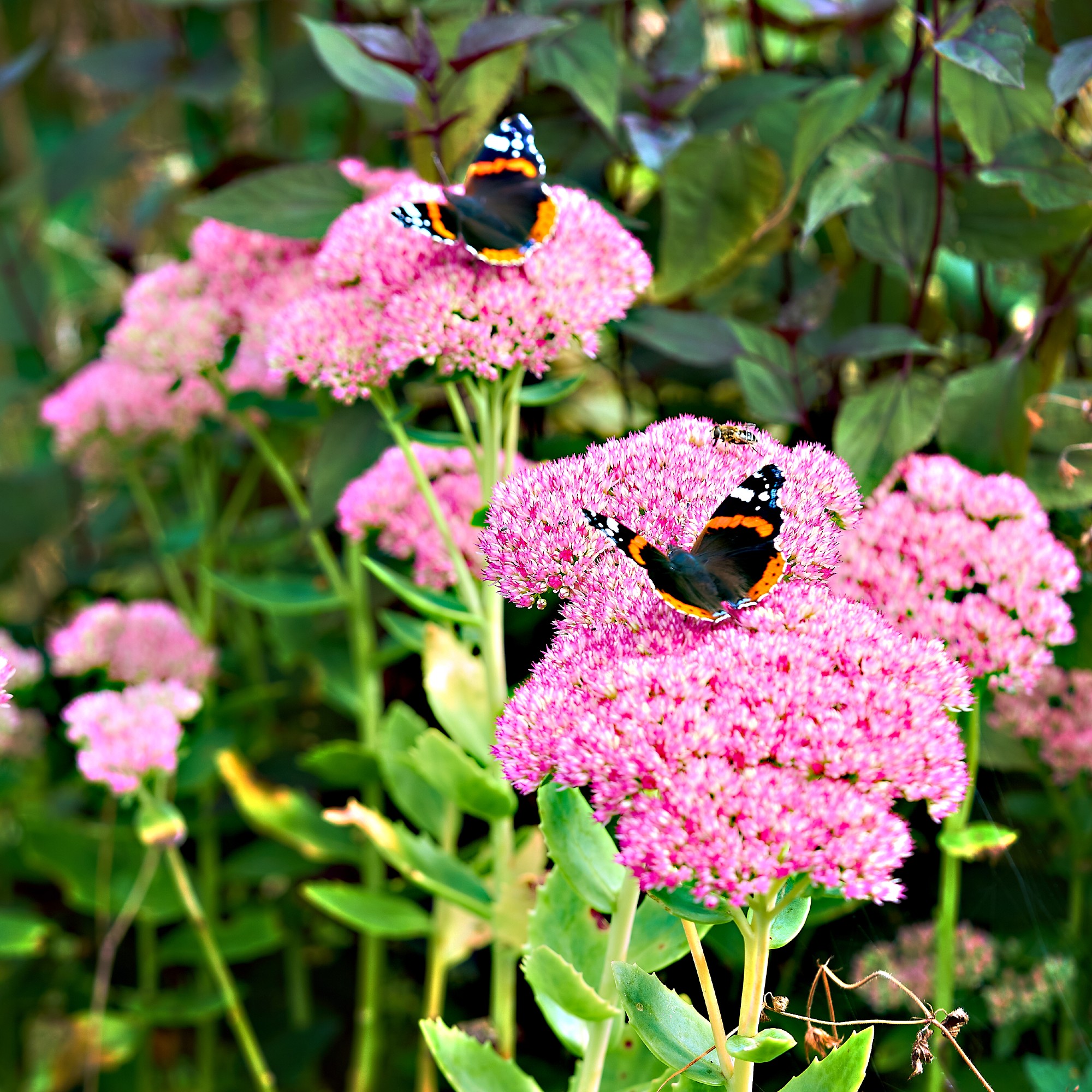
4. Keep feeding to a minimum
Fertiliser isn't something you have to worry about with sedums, but a little can go a long way.
'Herbaceous sedums can be given a little slow-release fertiliser in spring,' says Angela. However, don't go overboard with feeding, especially with nitrogen-rich solutions – too much can hinder flowering and damage the plant's health.
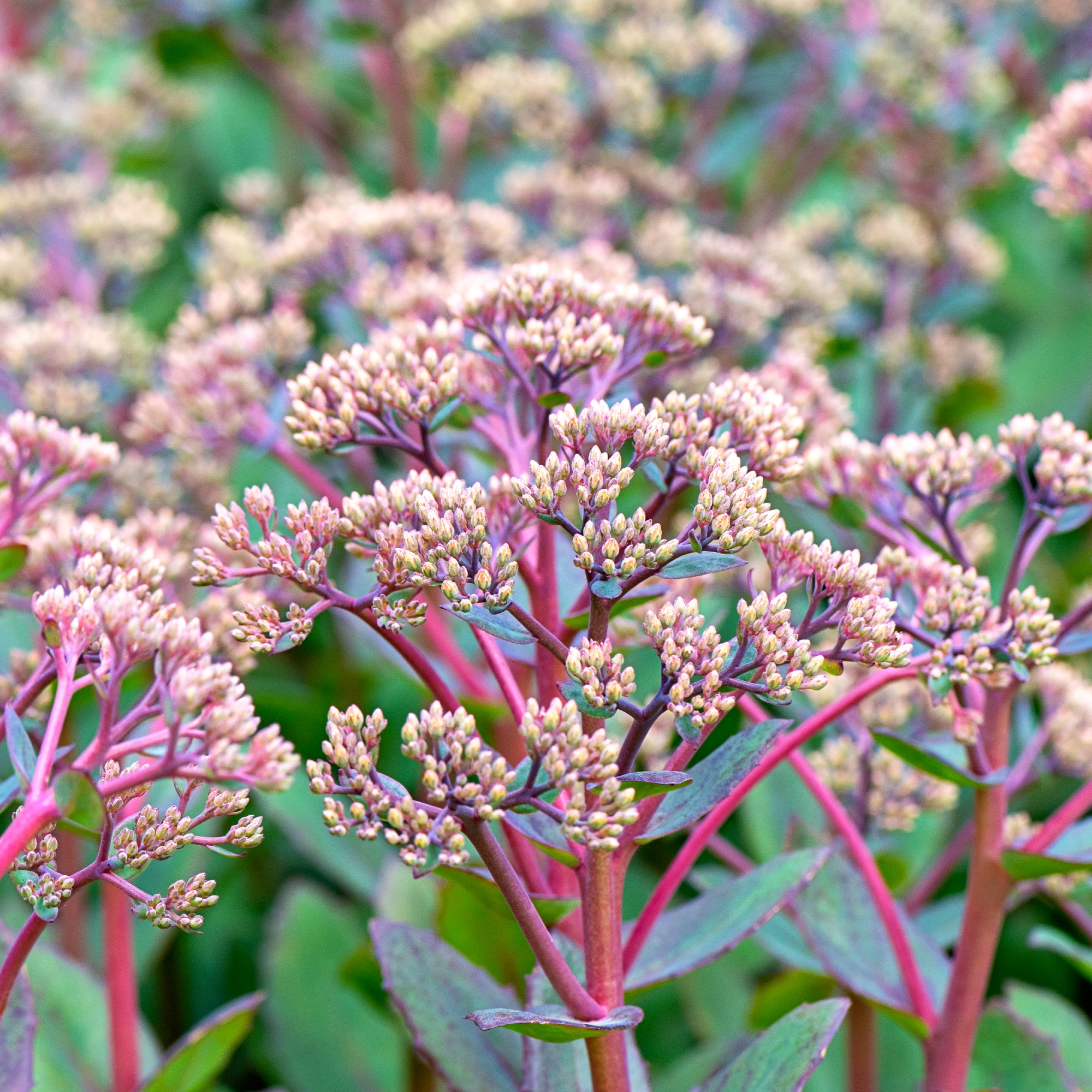
5. Pruning
Sedums have huge, flat flowerheads that can easily weigh the plants down, and that's where pruning comes into play. Cutting the plant back each year will encourage a compact habit which can better hold the weight of the blooms.
'Cut sedums back in the winter or early spring to the new shoots developing below,' says David from Powis Castle and Garden. 'These are interesting as they unfold.'
Make sure you know how to clean garden tools properly before pruning to minimise the risk of diseases spreading between plants.
FAQs
Does Sedum come back every year?
Sedums are herbaceous perennials, which means they come back every year. If grown in optimal conditions – full sun and free-draining soil – you'll also get to enjoy fresh displays of blooms from late summer all the way into the autumn.
Can you grow sedums in pots?
Smaller sedum varieties are perfectly suited to pot growing, provided the containers offer enough drainage.
'Place a piece of crock over the hole in the bottom of the pot and fill with a mix of 50/50 John Innes No 1 and coarse horticultural grit,' suggests Angela from Hayes Garden World. 'Stand the pot on stones so that the water can drain right away from the pot, and position in full sun.'
If you want to plant larger herbaceous sedums in pots, you'll need to choose a deeper container.
Keep these tips in mind while you're learning how to grow sedums and you'll be rewarded with colourful displays every year.







